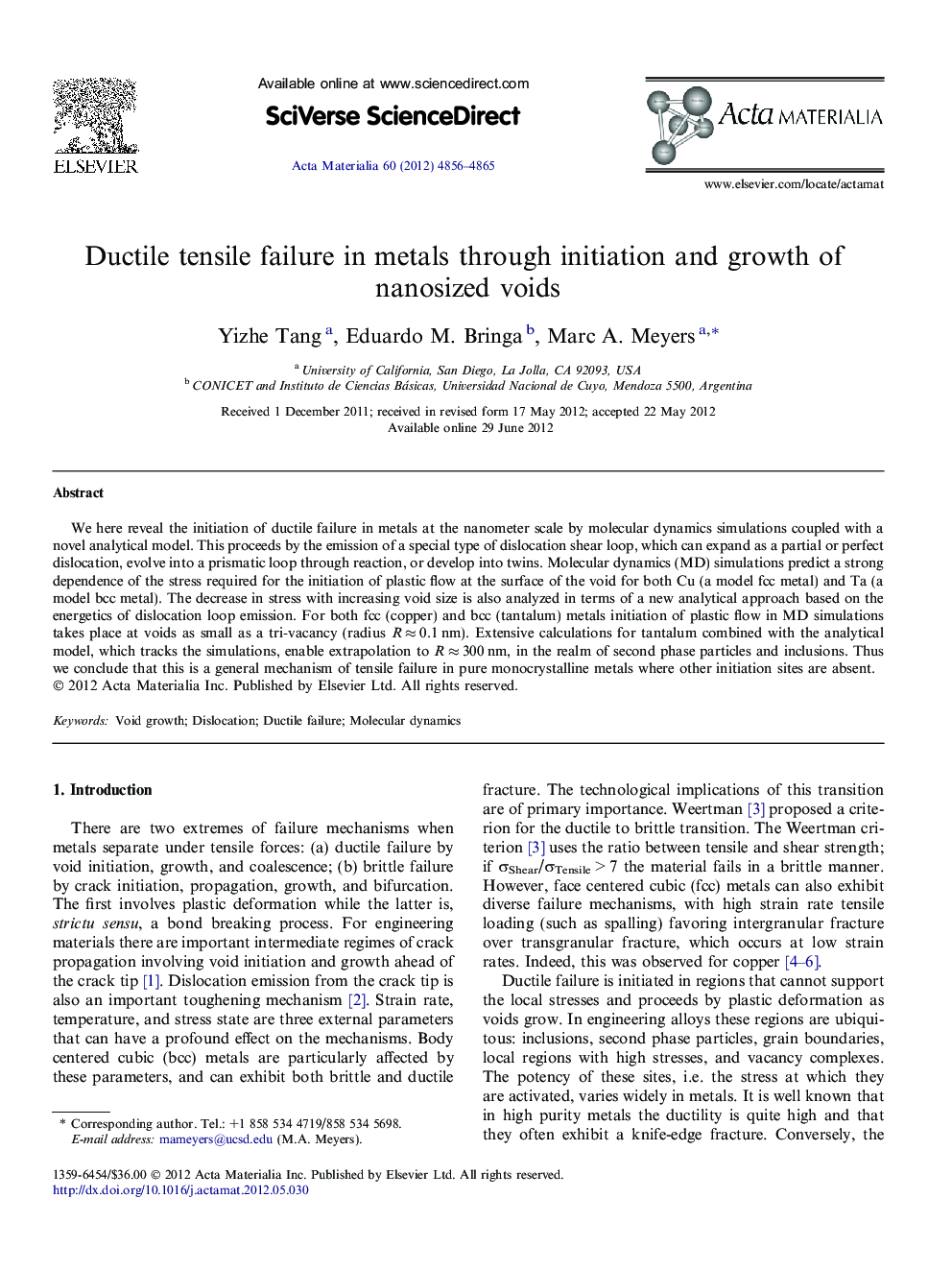| Article ID | Journal | Published Year | Pages | File Type |
|---|---|---|---|---|
| 1446940 | Acta Materialia | 2012 | 10 Pages |
We here reveal the initiation of ductile failure in metals at the nanometer scale by molecular dynamics simulations coupled with a novel analytical model. This proceeds by the emission of a special type of dislocation shear loop, which can expand as a partial or perfect dislocation, evolve into a prismatic loop through reaction, or develop into twins. Molecular dynamics (MD) simulations predict a strong dependence of the stress required for the initiation of plastic flow at the surface of the void for both Cu (a model fcc metal) and Ta (a model bcc metal). The decrease in stress with increasing void size is also analyzed in terms of a new analytical approach based on the energetics of dislocation loop emission. For both fcc (copper) and bcc (tantalum) metals initiation of plastic flow in MD simulations takes place at voids as small as a tri-vacancy (radius R ≈ 0.1 nm). Extensive calculations for tantalum combined with the analytical model, which tracks the simulations, enable extrapolation to R ≈ 300 nm, in the realm of second phase particles and inclusions. Thus we conclude that this is a general mechanism of tensile failure in pure monocrystalline metals where other initiation sites are absent.
